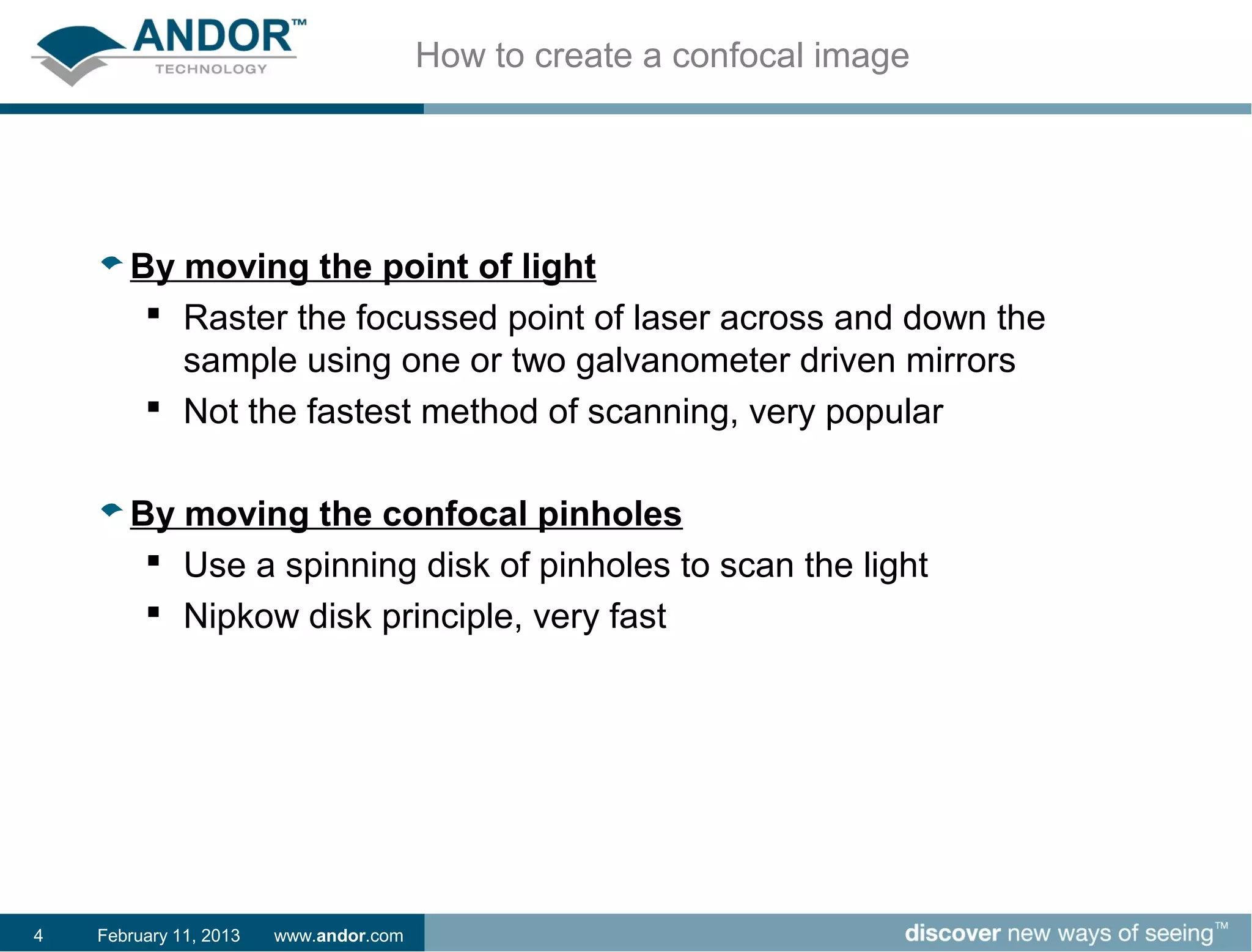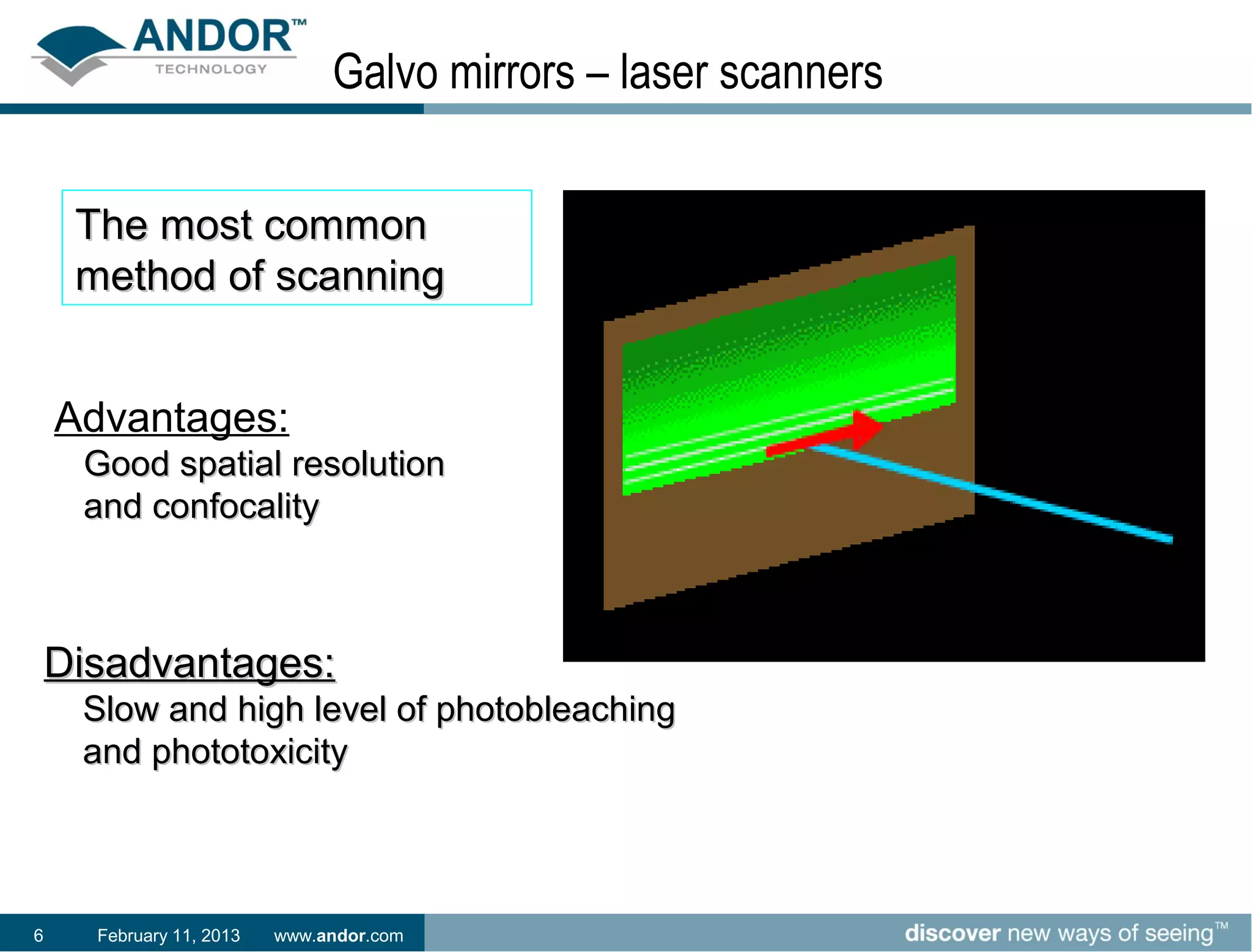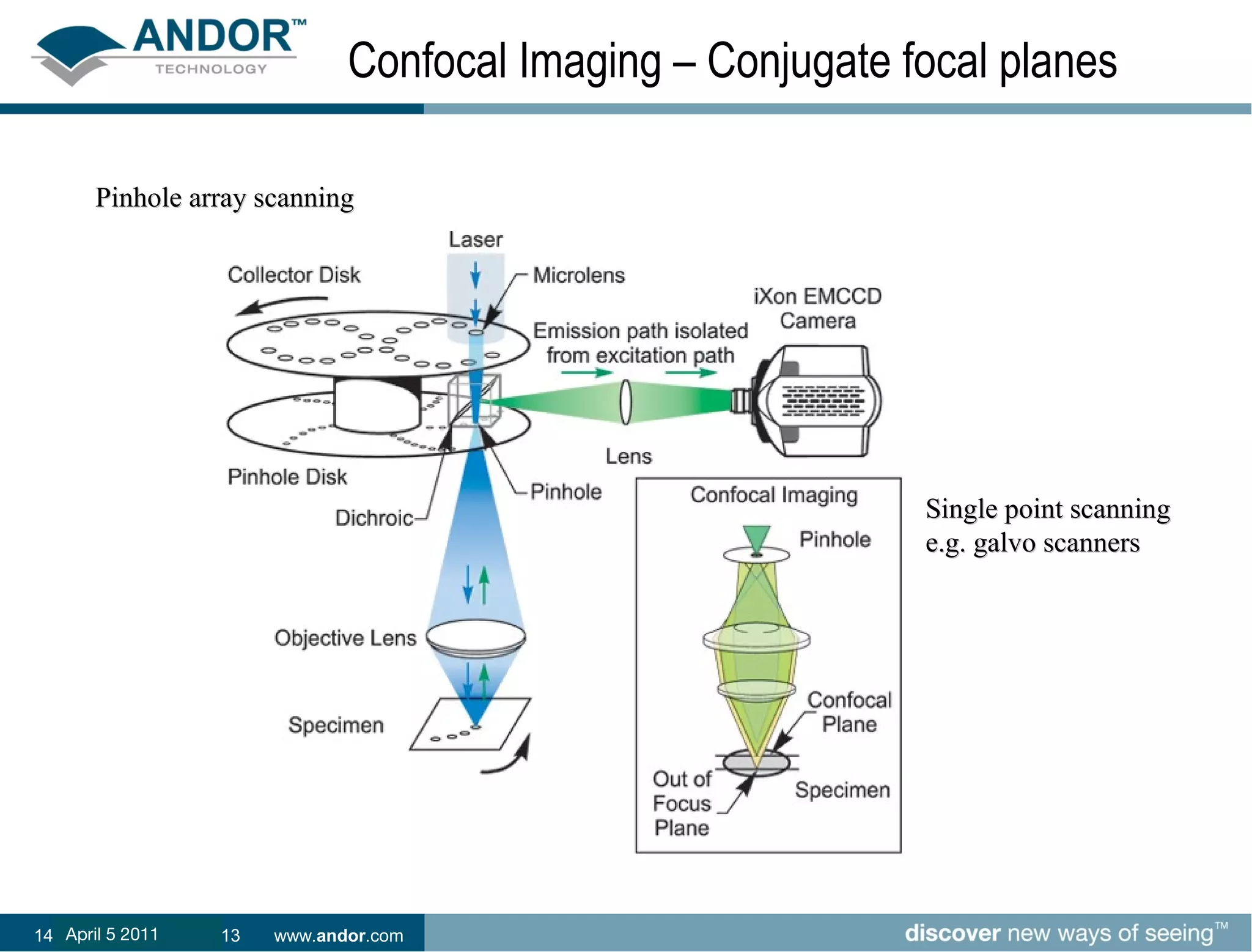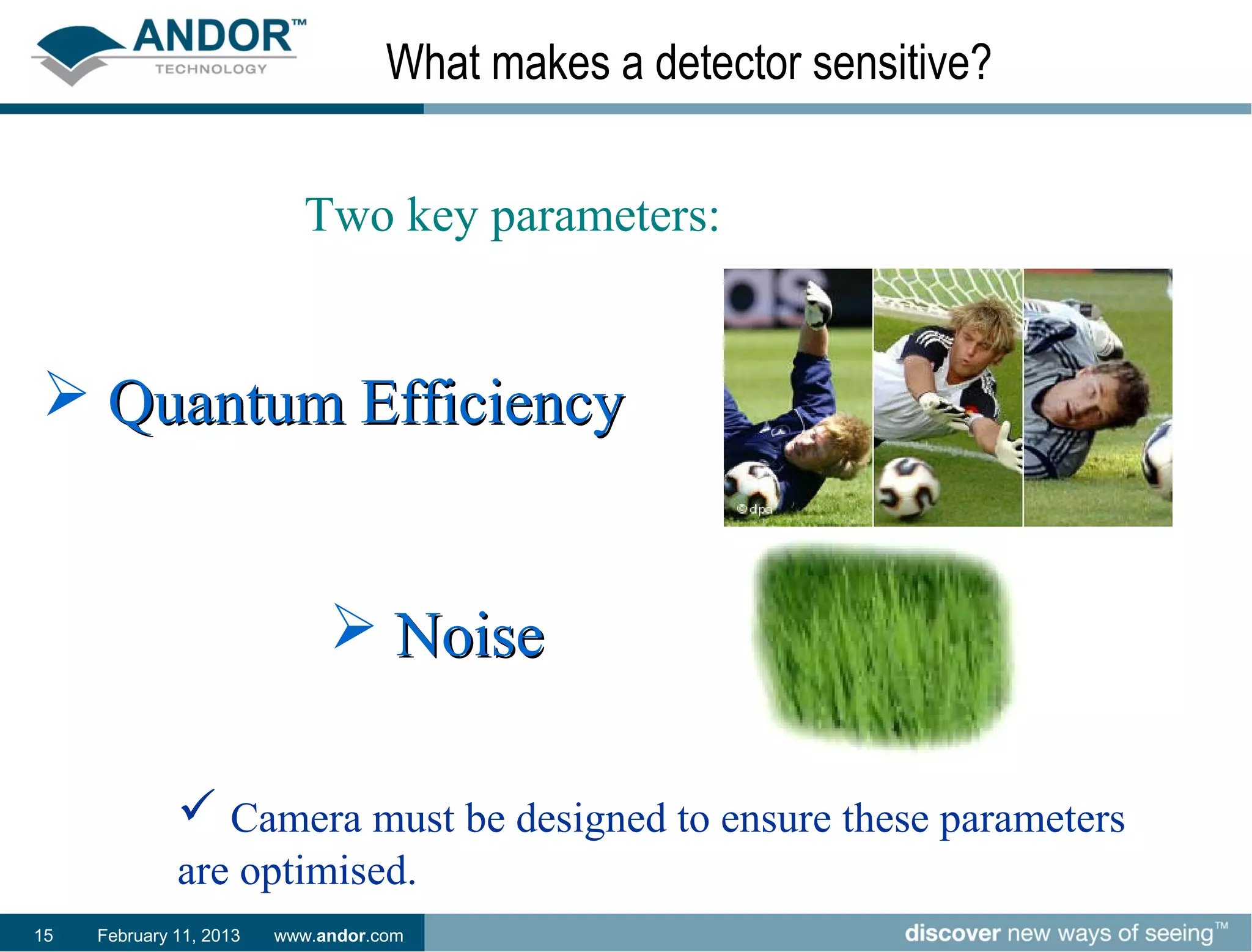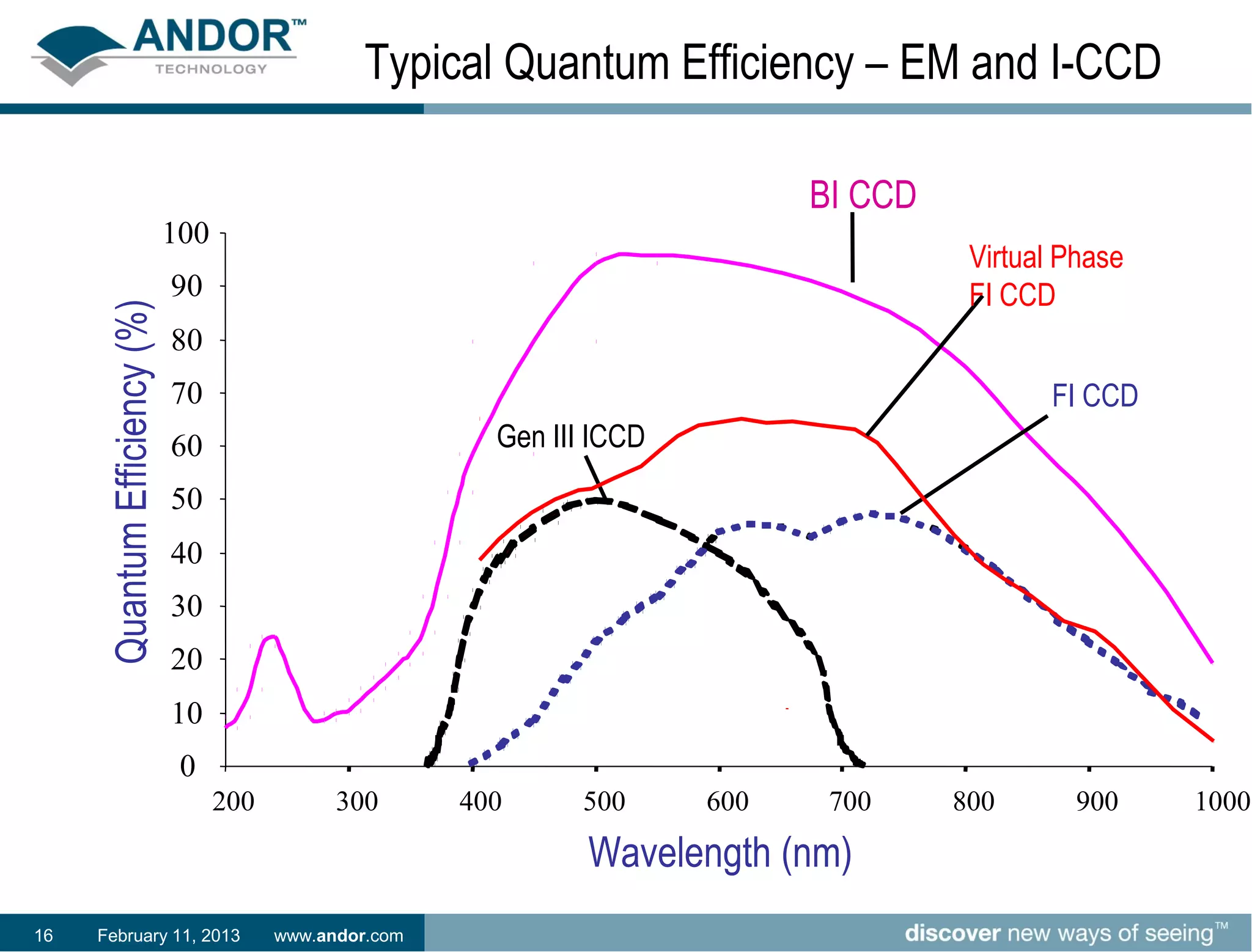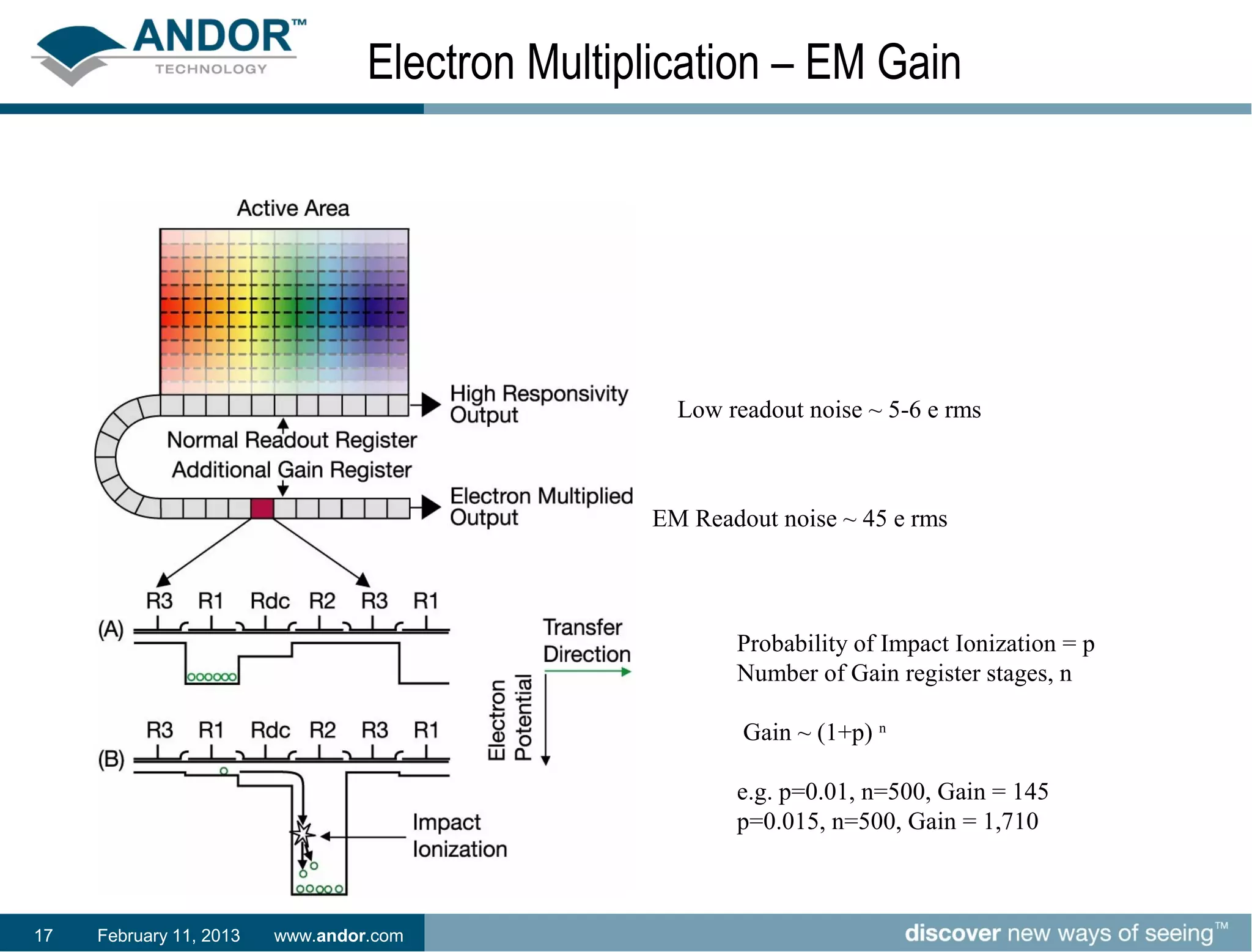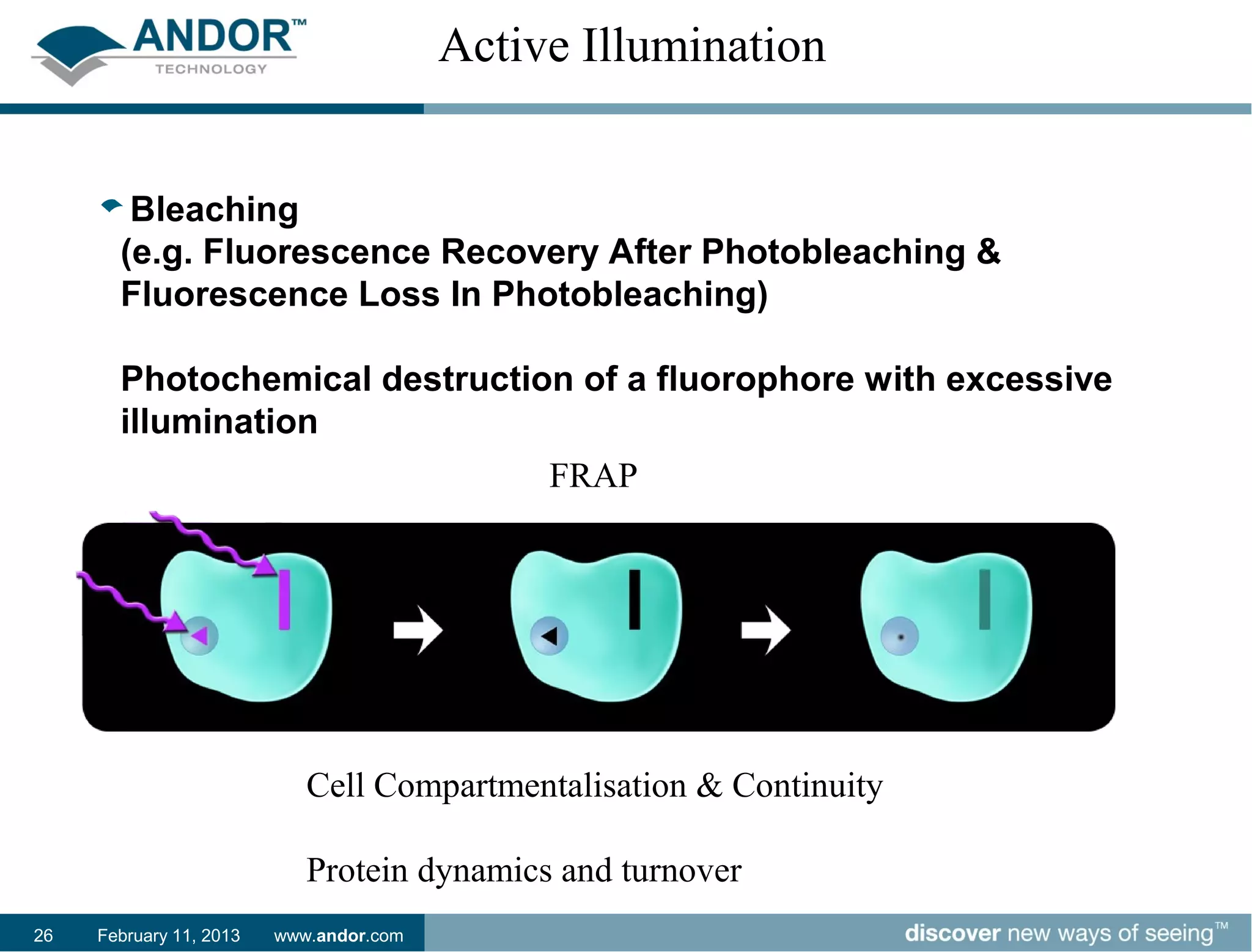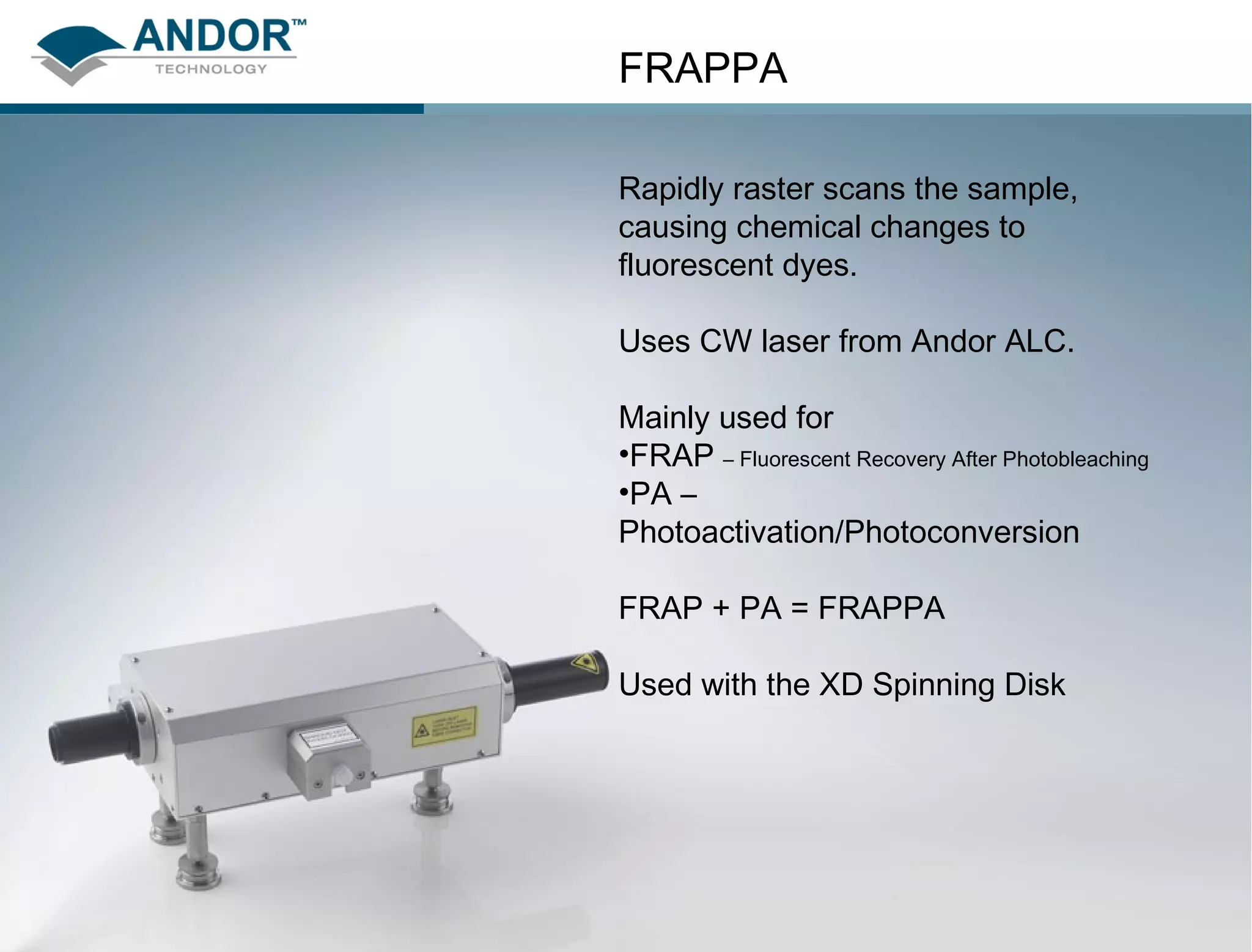This document discusses laser-based dual spinning disk confocal microscopy technology. It describes how traditional confocal microscopy uses a single laser focused through a pinhole to scan samples, while dual spinning disk confocal microscopy uses two disks containing pinholes that spin to rapidly scan multiple points across a sample simultaneously, improving speed and light efficiency. The dual spinning disk technique, paired with a sensitive EMCCD camera, provides fast, high signal-to-noise live cell and multi-dimensional imaging while reducing photobleaching and phototoxicity compared to traditional laser scanning confocal microscopy.



